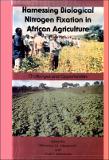| dc.contributor.author | Kimani, S. K. | |
| dc.contributor.author | Osborne, B. A. | |
| dc.contributor.author | Pilbeam, C. J. | |
| dc.contributor.author | Wood, M. | |
| dc.contributor.author | Karanja, N. K. | |
| dc.coverage.spatial | Kenya | en |
| dc.date.accessioned | 2015-09-11T14:25:21Z | |
| dc.date.available | 2015-09-11T14:25:21Z | |
| dc.date.issued | 1998 | |
| dc.identifier.citation | Kimani, S. K. et al., (1998) Agricultural Production in Semi-Arid Regions: Use of Legume-Based Mixed Cropping Systems in Kenya. In: Mpepereki, S.M & Makonese, F.T. (eds.) Harnessing Biological Nitrogen Fixation in African Agriculture: Challenges and Opportunities: Sixth International Conference of the African Association for Biological Nitrogen Fixation, 12-17 September, 1994, Harare, Zimbabwe: selected papers. Mt. Pleasant, Harare: UZ Publications, pp. 207-209. | en |
| dc.identifier.isbn | 0908307586 | |
| dc.identifier.uri | https://opendocs.ids.ac.uk/opendocs/handle/20.500.12413/6970 | |
| dc.description | A conference paper/ book chapter on agricultural production in semi-arid regions of Kenya. | en |
| dc.description.abstract | Increasing pressure to feed an ever-expanding population has necessitated an extension of agricultural production in Kenya into marginal semi-arid regions. Crop productivity in these regions is limited not only by the supply of water and the efficiency of its use by the crop but also by the supply of nitrogen. Consequently, cropping systems based on legumes may be particularly appropriate for these areas. Currently, mixed cropping systems involving maize and beans are widely used, although there is a dearth of published information to support this practice. There are also few studies on the most suitable agronomic practices likely to increase agricultural production in these semi-arid areas.
Experiments performed in a semi-arid site at Kiboko, Kenya from 1990 to 1992, during both the long and the short rains, indicate little benefit of growing maize and bean in mixtures, except possibly when supplied with adequate amounts of water, or when water was supplied at the appropriate stage of plant development. At the study site, there was no response to inoculation under rain-fed conditions and the beans did not fix atmospheric nitrogen, possibly as a result of high surface soil temperatures, or inadequate water supply.
More attention should be directed towards developing agronomic practices suited to these semi- arid environments, including development of genotypes adapted to these conditions. The significance of water shortages in the field on plants at different stages of development warrants further study. | en |
| dc.language.iso | en | en |
| dc.publisher | University of Zimbabwe (UZ) Publications. (Department of Soil Sciences) | en |
| dc.rights.uri | http://creativecommons.org/licenses/by-nc-nd/3.0/ | en |
| dc.subject | Agriculture | en |
| dc.title | Agricultural Production in Semi-Arid Regions: Use of Legume-Based Mixed Cropping Systems in Kenya | en |
| dc.type | Book chapter | en |
| dc.type | Conference paper | en |
| dc.rights.holder | University of Zimbabwe (UZ) | en |


